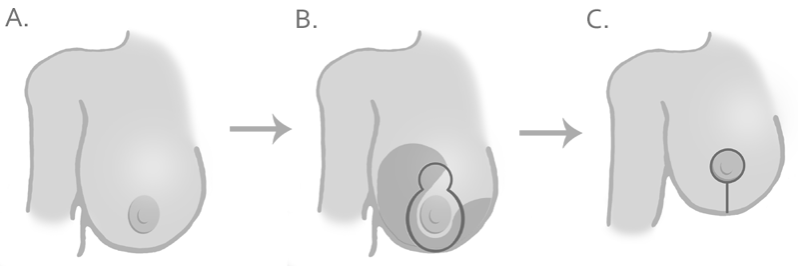Breast Reduction Surgery
Why choose breast reduction
In general, my patients who undergo breast reduction surgery are some of the happiest patients I treat. How can they be happy with such major surgery you ask?
The women I meet seeking breast reduction have had enough of:
back, neck and shoulder pain
indentations in their shoulders from their bras
heavy breasts
not being able to find a bra or clothes that fit
not being as active as they would like because of their breasts
difficulties playing with their children or grandchildren
skin irritation under their breasts
feeling out of proportion to the rest of their body.
Women sometimes tell me they feel that their breasts have impacted their ability to live their life every day since puberty. They have avoided certain social interactions as young women, or have dressed a certain way to minimise the appearance or size of their breasts. Women’s feelings about their breasts can be complex and mixed with a lot of different emotions. For other women, their breasts have progressively become an issue throughout their life. They may never have gone down in size after pregnancy and lactation, with multiple pregnancies making them bigger each time. Add this to the loss of core stability after pregnancy and it can take a real toll on a women’s strength and physicality. Read 8 Benefits of Breast Reduction on my blog.
The latin word for large breasts is macromastia.
Addressing large breasts involves three main components:
The volume of breast tissue
The amount of skin covering the breasts
The height of the breasts and the nipples
The volume of breast tissue that each woman will have removed is very individual and should be discussed with your surgeon. Many patients who are fed up with having large breasts will say “Make me an A-cup!”. But that may not be the best outcome at the end of the day. A more nuanced conversation about the goals of breast reduction needs to take place. Patients may want their breasts to be a similar shape to in their youth or more like a sister or friend’s size. Bringing in a photograph can help convey that information so the patient and surgeon can be on the same page. I’ve had patients ring up in the days before surgery saying “don’t make me too small” and then days later “don’t leave me too big”. It can be hard to convey so patients and specialist surgeons like myself will do our best to achieve the desired outcome together.
After assessing the change in volume a patient is after and considering the position of the nipple areolar complex (the NAC), the surgeon can then advise what type of breast reduction is recommended. The images below show examples of this.
It may be a “Wise Pattern” skin incision, with an inferior pedicle as shown here.
Or a Vertical Mammoplasty, with a superior-medial pedicle like this.
These are some of the options you’ll discuss with your surgeon and this is why individual consultation is required.
After discussing surgery and the desired outcome, the next and perhaps most important conversation with your surgeon will be about post-operative care. The amount of movement and change breasts undergoes during a reduction is significant. There will be a lot of initial swelling and the breasts will need support from a post-surgical bra while the skin heals, and the parenchyma (breast tissue) adjusts to its new blood supply and drainage pattern. Your surgeon will give you advice about post-operative care, post-surgical bras and provide ongoing advice for the months and years ahead. Then, over about 6-8 weeks, the breasts will continue to soften, until they reach their final size. Each patient takes a different amount of time and so can each breast. And with long wounds and long surgery, complications can arise, however, you will be managed and continually cared for as your body heals from major surgery. Read more about post-surgical bras.
Breast reduction surgery requires consultation and communication between the patient and surgeon. When a woman doesn’t want their life restricted by their breast size, reduction surgery can be life changing.




